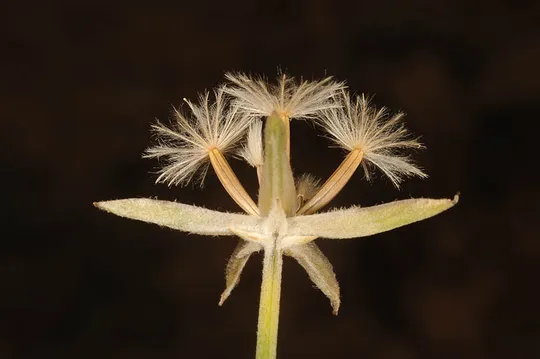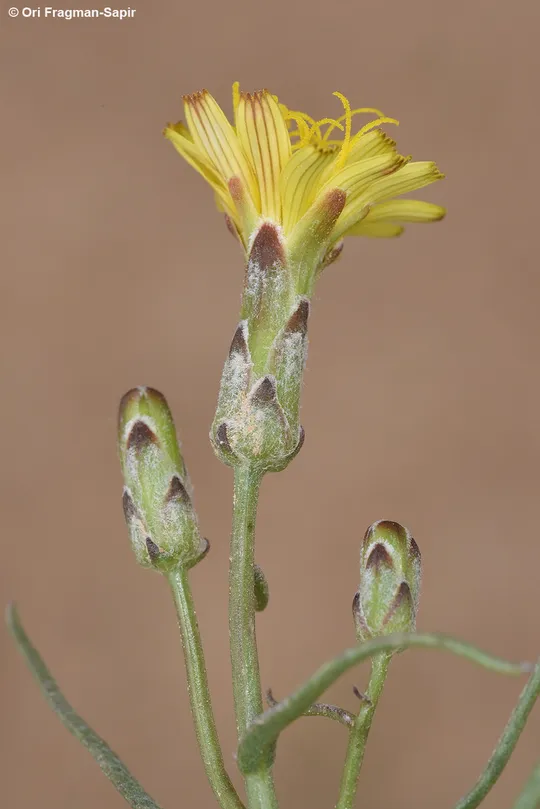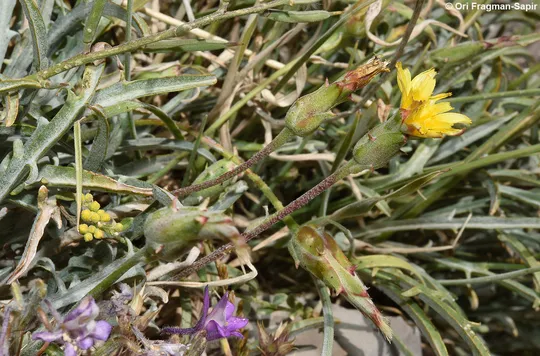Scorzonera tortuosissima
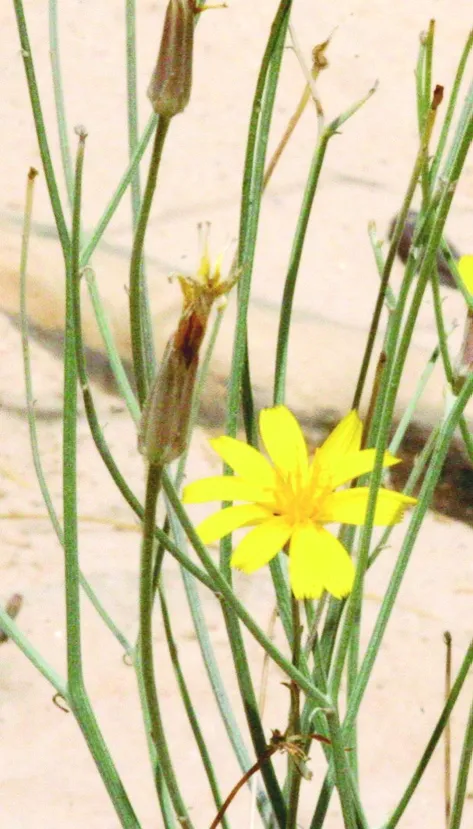
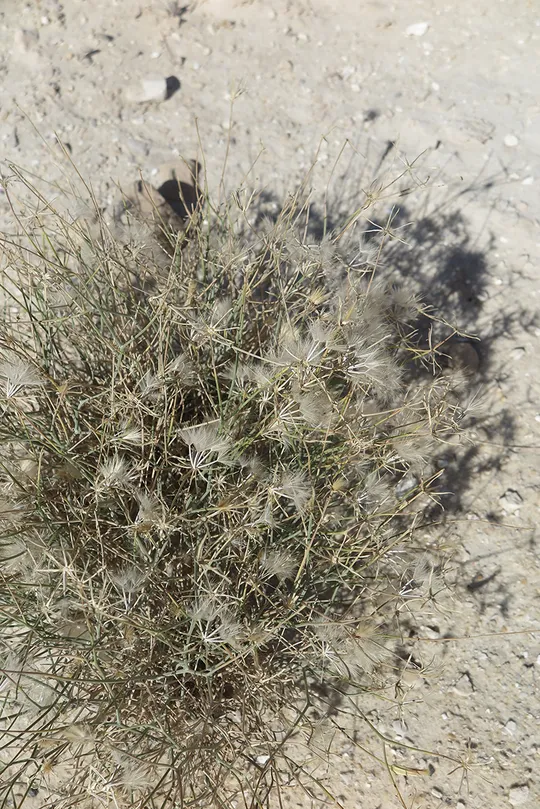
Scorzonera
tortuosissima was found only once in Israel in 1996 – in the southern Negev near Mount Karkom
at an altitude of 800 meters, by Mimi Ron.
Rocks, white sandstone boulders in Edom and in Southern
Sinai and on the limestone rocks
on Mount Karkom. It grows at altitudes of 800-1,350 meter on Desert Mountains.
Scorzonera is a large genus
with 150 species, found mainly in the IranoTuranian
region and in the Mediterranean region as well. Some species grow in Europe. The distribution
center of the genus is in the Steppe Mountains of western Asia. The genus differs from other close genera in the way
the capitulum bracts are arranged: they overlap in a number of whorls, unlike the
genera Geropogon and Tragopogon, whose involucral bracts are arranged in a single whorl. Most
of the species in the genus are herbaceous perennials with tuberous roots containing a milky sap. The Bedouins dig
up the tubers of certain species and use them for food or medicine. Only a few of the Scorzonera species are
annuals or woody shrubs. Nabelek
(1925) described a special
variety of S. tortuosissima var.
petrana from
Edom in which the flower pedicel is narrower and not
thick, but Feinbrun did not accept this in the Flora Palaestina (1978).
•
Scorzonera tortuosissima grows in a single fragmented
site in Israel, and its population is small (there may be only a single specimen). Therefore,
it is endangered due to random factors or genetic or demographic accidents.
•
The species is not globally endangered.
A thorough survey
should be conducted during the flowering season between Mount Sagi and Mount Karkom and up to Be'er Ada gorge to find S. tortuosissima. The plant is not similar to
other Scorzonera
species, and it is easy to identify only when it is in bloom. During most of the year, it
looks just like another shrub from the Chenopodiaceae or the Asteraceae families,
which like S.
tortuosissima grow in the desert.
The two largest and most productive populations found in the survey should be demarcated
and monitored.
Scorzonera
tortuosissima
is an Irano-Turanian plant whose distribution is disjunct: in the east, it
grows on the mountains of Pakistan, Afghanistan and Iran, where it
is quite common on the rocky slopes of the high arid mountains
that are very common in these countries. In its western distribution
area it is extremely rare and appears in Edom, the Negev highlands and southern Sinai and
was found only once in each region: in Sinai at the foothills of Jabal
al Tiha and in Edom
south of Petra. In the Arabian
peninsula it is found in a number of regions as well as in the Asir,
Dhofar and Najd mountains and in eastern Arabia in sandy
areas at
low altitudes (Mandville, 1990).The populations from central and east Arabia belong to a different
taxon.
Scorzonera tortuosissima
is a small shrub that grows in high
desert mountains. This is one of the rarest species in
Israel!!! It is currently known from only a single site the Negev, at which a single
plant was found. Nevertheless, its red number affords it only the status of a threatened plant, since it
is not endemic and not attractive. This is an example of a high mountain plant of Irano-Turanian origin, which
is common in the mountains of Afghanistan and Iran, but in the Levant on only a few plants
survive on high mountains in the extreme desert.
Current Occupancy Map
| 1000 squre meter pixel | 5000 squre meter pixel | 10000 squre meter pixel | |
|---|---|---|---|
| number of observations | 0 | 0 | 0 |
| in total pixels | 0 | 0 | 0 |
| Family | Asteraceae |
| Classification | Unlisted |
| Ecosystem | Desert |
| Chorotype | Irano – Turanian |
| Conservation Site | Mount Karkom |
| Rarity |
1
6
6
|
|---|---|
| Vulnerability |
0
1
4
|
| Attractiveness |
0
0
4
|
| Endemism |
0
0
4
|
| Red number |
1
3.7
10
|
| Peripherality | 0 |
| IUCN category | DD EW EX LC CR EN VU NT |
| Threat Definition according to the red book | Vulnerable |
 Based on:
Based on:
